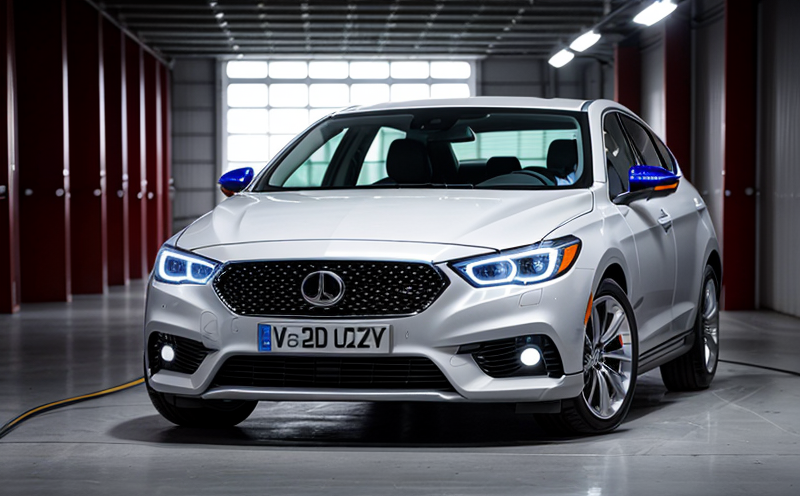ECE R149 Adaptive Driving Beam Control Testing
The ECE R149 standard, also known as UN Regulation No. 149, is a globally recognized technical regulation for headlamps used in motor vehicles. This regulation ensures that all automotive lighting systems meet stringent safety and performance criteria to enhance visibility at night and improve road safety.
ECE R149 specifically addresses the testing of Adaptive Driving Beam (ADB) control systems, which are becoming increasingly important as autonomous driving technologies evolve. ADBs dynamically adjust the high beam range based on real-time driving conditions, ensuring that drivers remain adequately illuminated without dazzling oncoming traffic or preceding vehicles.
The testing process for ECE R149 is complex and involves several stages to ensure compliance with international standards. Compliance officers and quality managers must understand these requirements thoroughly to meet regulatory demands effectively. This service provides comprehensive support to automotive manufacturers, ensuring they can confidently demonstrate that their ADB systems comply with the stringent criteria outlined in this regulation.
The testing process includes various stages such as electrical checks, mechanical inspections, thermal stability tests, and functional performance evaluations under dynamic driving scenarios. These tests are designed to evaluate not only the functionality of the ADB system but also its robustness and reliability under real-world conditions. Compliance officers need to ensure that all test procedures adhere strictly to ECE R149 guidelines.
One of the key challenges in testing is the integration of advanced technologies like machine learning algorithms and sensor fusion systems, which are integral to ADB functionality. Our laboratory uses state-of-the-art equipment capable of simulating diverse environmental conditions, including varying road surfaces, weather patterns, and traffic density, to accurately assess system performance.
The ECE R149 standard is continually evolving to keep pace with technological advancements in automotive lighting systems. It requires a thorough understanding of both the latest technical specifications and regulatory updates. Compliance officers must stay informed about these changes to ensure their products remain compliant over time.
Scope and Methodology
| Test Parameter | Description |
|---|---|
| Electrical Performance | Verification of correct operation and adherence to electrical specifications. |
| Mechanical Integrity | Evaluation of mechanical components for durability under dynamic conditions. |
| Thermal Stability | Assessment of system performance in varying temperature conditions. |
| Functional Performance Under Dynamic Scenarios | Evaluation of how the ADB system functions in real-world driving situations, including oncoming vehicles and preceding vehicles. |
International Acceptance and Recognition
The ECE R149 standard is widely accepted across Europe, the Americas, Asia, and Oceania due to its emphasis on enhancing road safety through advanced lighting technology. Compliance with this regulation not only ensures that vehicles meet international standards but also fosters trust among consumers who prioritize safety features in their purchasing decisions.
Automotive manufacturers benefit significantly from adhering to ECE R149, as it opens up markets in countries that recognize and enforce the standard. This includes major automotive hubs like Germany, Japan, South Korea, and various countries within the European Union (EU). By ensuring compliance through our testing services, companies can streamline their product development processes and avoid costly delays associated with non-compliance.
The international recognition of ECE R149 also supports global supply chain integration. Suppliers who comply with this standard can more easily collaborate with international manufacturers, contributing to a harmonized approach towards automotive lighting technology across different regions.
Competitive Advantage and Market Impact
- Enhanced Road Safety: Compliance with ECE R149 ensures that vehicles meet stringent safety standards, promoting safer driving conditions for all road users.
- Innovation Drive: By staying ahead of regulatory requirements, manufacturers can innovate within the bounds of established standards, maintaining a competitive edge in the market.
- Global Market Access: Meeting ECE R149 ensures access to international markets where this standard is enforced, expanding business opportunities for automotive companies.
- Consumer Trust: Demonstrating compliance with internationally recognized standards builds consumer confidence and trust in vehicle safety features.





